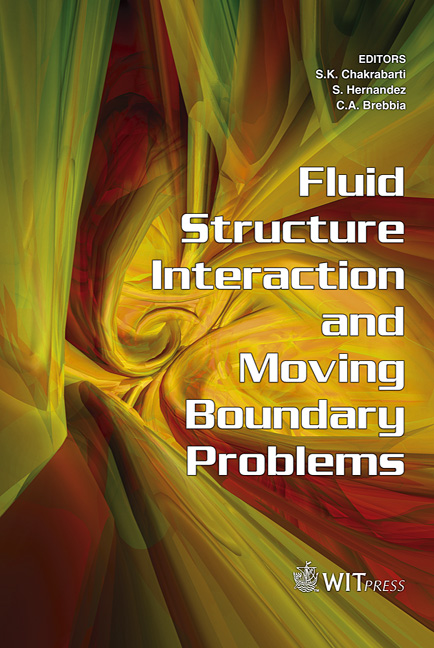Undersea Fluid/structure Coupling Methodology
Price
Free (open access)
Transaction
Volume
84
Pages
10
Published
2005
Size
1,150 kb
Paper DOI
10.2495/FSI050321
Copyright
WIT Press
Author(s)
A. Wardlaw, T. McGrath & J. A. Luton
Abstract
Prediction of the response of submerged structures to underwater explosions requires a coupled fluid-structure analysis. This is a consequence of the stiffness of water. Structure deformation modifies the pressure in the surrounding fluid, changing the pressure loading. Coupling is accomplished by running both simulations as separate processes that communicate after each fluid integration step. The fluid solution is carried out on a fixed Cartesian product grid, which does not coincide with the body surface. Geometry routines included in the Euler module determine which fluid cells are in the water, in the structure and intersected by the structure surface. A modified stair-step boundary treatment that accounts for local surface motion and orientation represents the body surface without introducing a complicated data structure or restricting integration step size. This approach can accommodate thick singly wetted, or thin doubly wetted, surfaces. The latter are common in marine structures that have thin, fluid backed surfaces. Computational examples are presented that include shock loading of stiffened and unstiffened cylinders, a barge and a ship model. Keywords: UNDEX FSI coupling fluid-structure. 1 Introduction Simulating the response of submerged structures to underwater shocks requires a coupled fluid-structure calculation. The initial shock load on such structures causes them to deform, which results in an immediate unloading [1]. Water is relatively stiff and deformation forces it to fill additional volume near the structure’s surface – this lowers its density and diminishes its pressure. The water adjacent to a deforming surface may cavitate if the deformation is rapid and extensive. A variety of methods have been proposed to predict underwater explosion damage to structures. Methods based on the doubly asymptotic approximation
Keywords
UNDEX FSI coupling fluid-structure.





